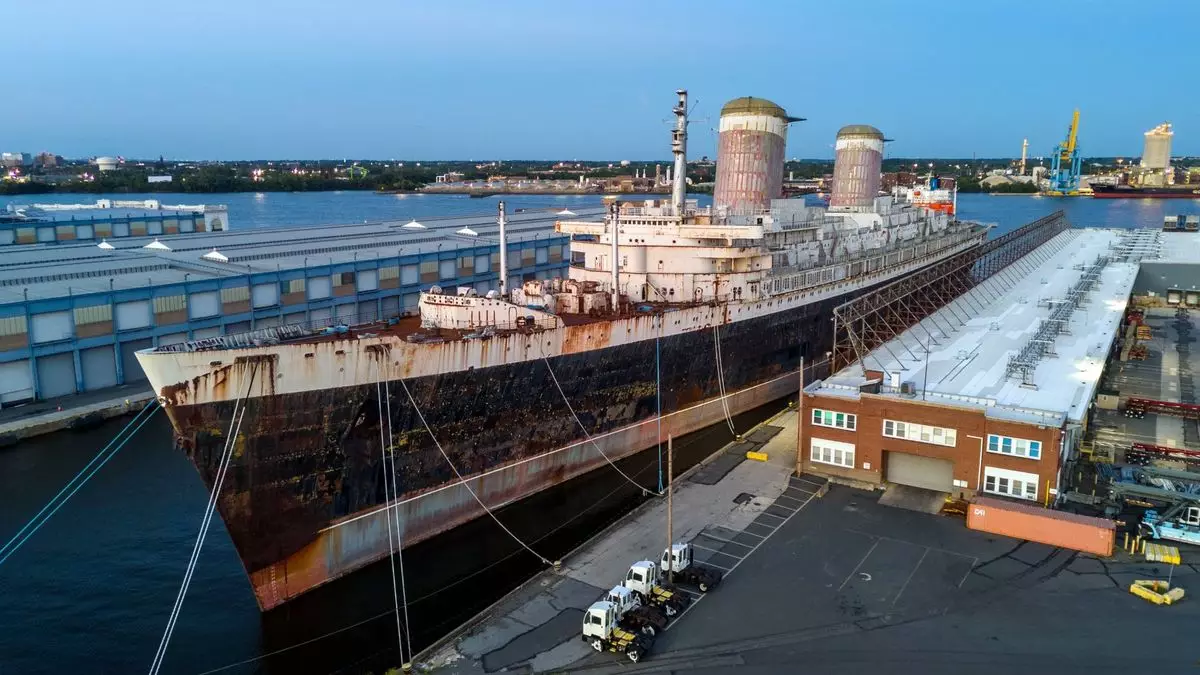The SS United States, often lauded as America’s maritime marvel, is facing a pivotal moment that could determine its fate as a cultural symbol. Known for its astonishing speed and elegance, the ocean liner made waves from 1952 to 1969, capturing the spirit of post-war transatlantic travel. Today, discussions are underway that might lead to its transformation into an artificial reef off the beautiful coast of northwest Florida. This endeavor has potential implications not only for the ship itself but also for marine ecology and tourism in the region.
In early October, an announcement emerged from Destin-Fort Walton Beach alongside the SS United States Conservancy, revealing a contract proposal by the Okaloosa County Board of County Commissioners. The intent? To procure the iconic vessel and create what could be the largest artificial reef in the world. While the initiative undoubtedly harbors intentions to preserve the ship’s legacy, it raises questions about the balance between honoring historical artifacts and advancing environmental initiatives.
The SS United States, affectionately nicknamed „the Big U,“ represented an era characterized by grandeur and speed at sea. With a record-breaking top speed of approximately 44 knots, it clinched the Blue Riband for the fastest transatlantic crossing—a record that still stands. Capable of transporting troops efficiently, it symbolized American innovation and prowess during its operational years. However, as the jet age emerged, the ocean liner’s reign diminished, ultimately leading to its retirement and subsequent decades of dormancy in Philadelphia.
Despite attempts from Norwegian Cruise Line in the early 2000s to revive the ship and capitalize on its storied past, ambitions for refurbishment faltered. The conservancy stepped in, acquiring the vessel with financial backing, but plans for restoration continued to stall. The ship’s status as an emblem of maritime history seemed precarious, languishing without purpose and growing increasingly at risk of decay.
As the SS United States languished in Philadelphia, reimagining its future became a necessity. The recent proposal to sink the vessel as an artificial reef presents a unique opportunity to reframe its legacy—transitioning from a celebrated ocean liner to an essential habitat for marine life. Destin-Fort Walton Beach perceives the ship’s submerged body as an attraction that will bolster its reputation as a prime diving and fishing destination. The conversion would not only preserve parts of the ship but also enrich local ecosystems by attracting various species, thus promoting biodiversity.
Jennifer Adams, the tourism director for the region, illustrates the dual advantage of this project: „The SS United States will be an exciting addition to the expanding network of artificial reefs, providing essential habitat while captivating divers and tourists alike.“ By embracing this transformative vision, Destin aims to honor the Big U’s legacy while contributing positively to both marine conservation and local tourism.
Nevertheless, the journey from the dock to the deep is not without challenges. The SS United States must first undergo extensive cleaning and preparation before it can be submerged—a process likely to unfold over the next year and a half. The conservancy’s conservative cost estimate for this initiative stands at $10.1 million, which notably excludes the establishment of a proposed museum chronicling the ship’s rich history.
While funding is vital, the conservation of cultural artifacts often contends with the practicalities of financial viability. This presents a conundrum: how to retain the historical significance of the SS United States while ensuring it serves a purpose beneficial to the environment and the economy. The engagement of community stakeholders and potential sponsors will be crucial to navigate the financial waters ahead.
The potential transformation of the SS United States into an artificial reef encapsulates a broader dialogue about the role of history in modern environmental stewardship. This evolution from a symbol of luxury and speed to a cornerstone of marine life reflects the ongoing tension between preserving our past and addressing current ecological needs.
As we stand on the cusp of what could be both a farewell and a new beginning for the Big U, one cannot help but feel a sense of bittersweet nostalgia. The journey ahead, laden with uncertainty and opportunity, serves as a poignant reminder that the legacy of a ship may evolve but can remain impactful long after its final voyage. With careful navigation of challenges, the SS United States might just continue to inspire—both beneath the waves and in the hearts of those who cherish its storied past.


Napsat komentář